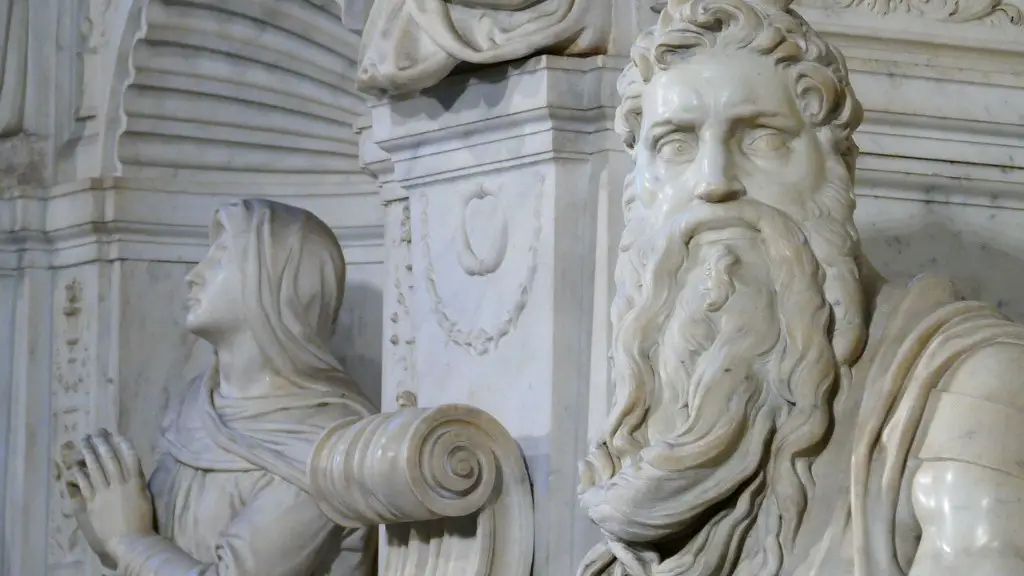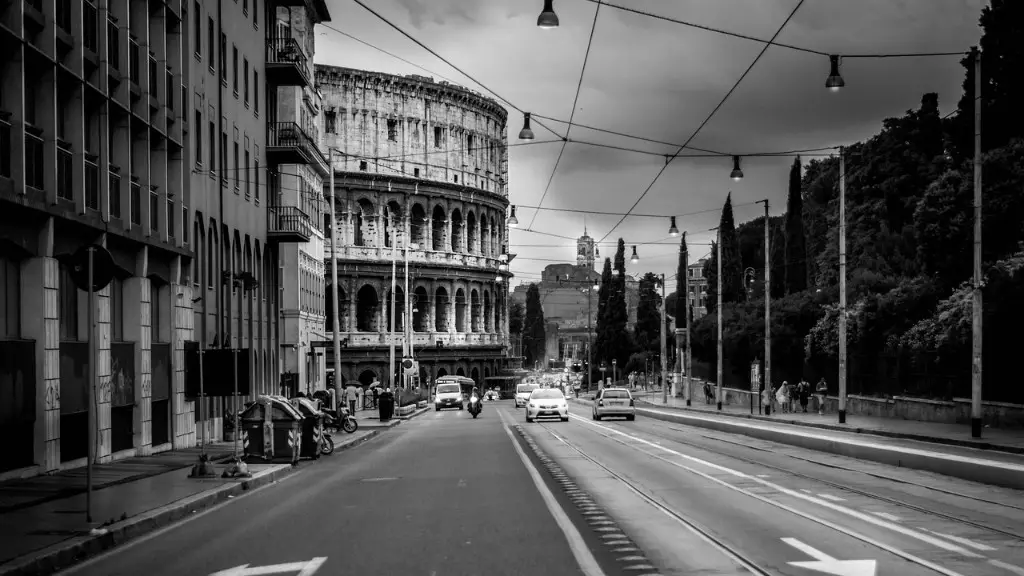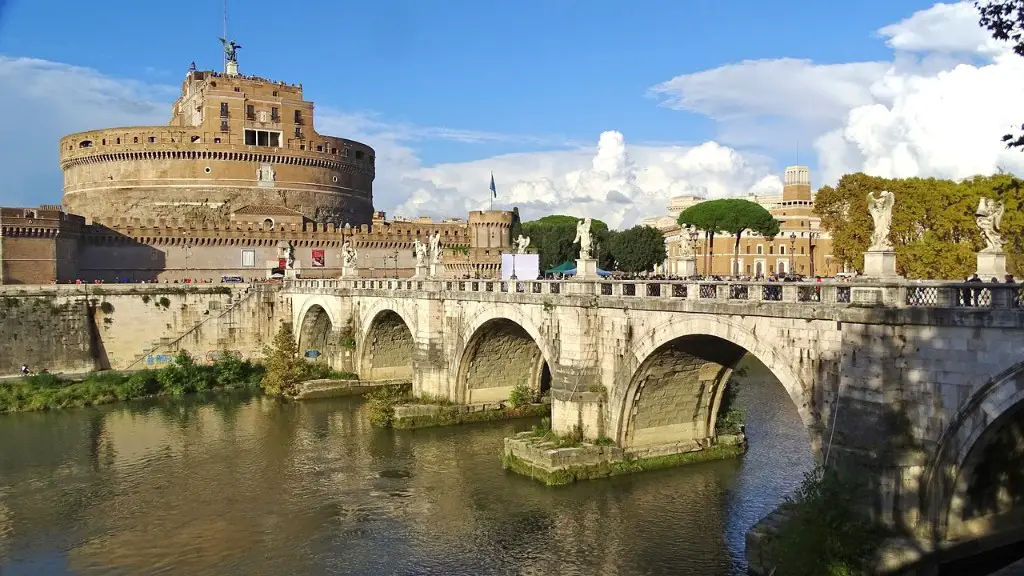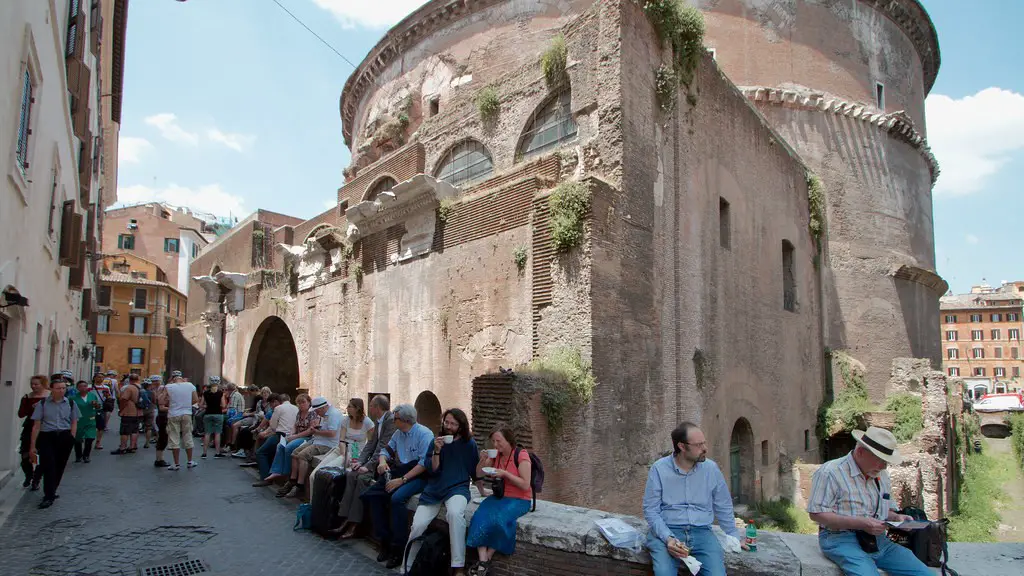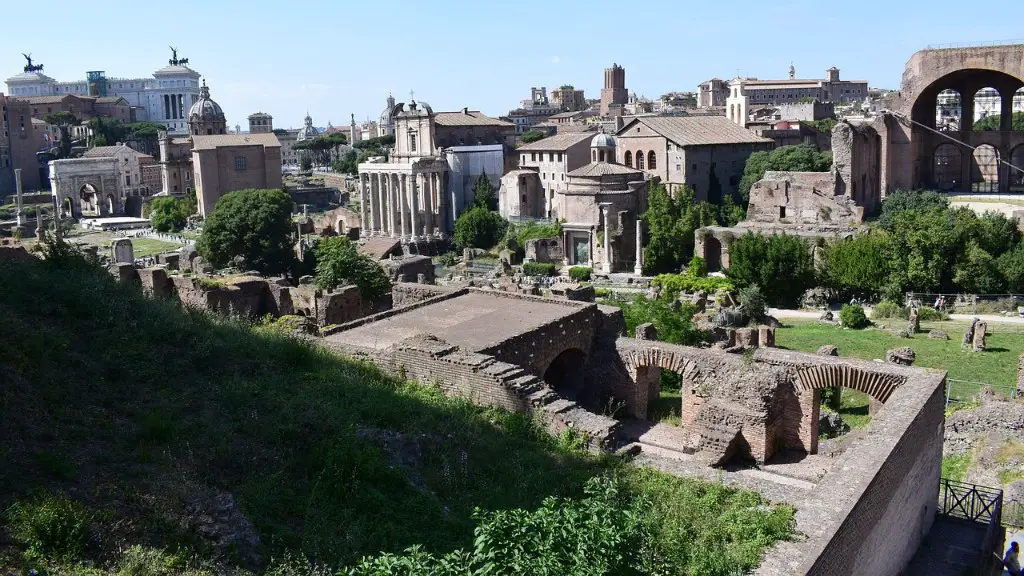Overview of Athletics in Ancient Rome
Athletics was an integral part of Roman culture, with physical activity and competition flourishing in many forms. In Ancient Rome, competitions such as chariot racing, javelin and discus throwing, wrestling and running were popular pastimes. Shown in the writings of Homer and other ancient sources, athletics was an integral part of the Roman way of life. The culture of competition and physical fitness was greatly valued and had a significant impact on the everyday lives of people living in the different regions of Ancient Rome.
Athletics in Ancient Rome was initially associated with religious ceremonies, with the Roman gods Apollo and Jupiter being credited with bestowing athletic victory. As a result, physical prowess was seen as a sign of piety and was wanted by worshippers to prove their devotion to the gods. Ancient Roman culture also celebrated physical strength and prowess as a means of promoting social standing, with strong, physical men being well regarded in the community and seen as a sign of power and influence. Athletics was also inextricably linked to the military, with young men of the upper classes being expected to take part in training for the military and engage in athletic competitions to prepare for the battlefield.
Learning Athletics in Ancient Rome
Learning how to train in athletics was an important part of Ancient Roman culture. Schools taught boys in various forms of physical activity, including wrestling, boxing, swimming and running. Private tutors were available for those who wanted to learn athletics, and the wealthy hired trainers to teach them the correct techniques. Professional athletes were also held in high esteem and many had dedicated followers, with their successes leading to triumphant parades to celebrate their achievements. Despite this, poor people were often unable to pursue athletics as a profession and had to rely on gambling to make money instead.
Despite being widely practiced, athletics in Ancient Rome was also often seen as a dangerous activity. People took risks competing in dangerous events and sometimes even lost their lives. Injuries were common, and people suffered many types of ailments, including broken bones and torn muscles. There was also the risk of cheating, with people illegally betting on athletes and bribing participants for a certain outcome.
Athletics and Social Status in Ancient Rome
Athletic prowess was an important way of furthering one’s social standing in Ancient Rome. Victors would receive rewards such as the crown of oak leaves, large sums of money, and distinctive clothing. The most successful athletes would be celebrated with parades, their images displayed on coins, and their names listed in public records. This newfound status would further enhance their social prestige and allow them to put forward their name for positions of power. In Ancient Rome, these successful athletes would also be rewarded with praise and admiration from the community.
Women were limited to competing in female only athletic activities and were often overlooked in terms of status. Female chariot-racers, however, were accorded some respect, with their victories and successes reported in the ancient sources alongside male victories. Including those from the lower classes, female athletes enjoyed a degree of freedom. They were not bound by the same strict rules that restricted the freedom of the upper classes and could enjoy some level of fame without being restricted.
Athletics and Entertainment in Ancient Rome
Athletics was also a form of entertainment, and plays and festivals often showcased physical prowess. Ancient Roman festivals and religious ceremonies featured many events such as wrestling and boxing competitions, as well as chariot racing. Athletics became a form of spectacle enjoyed by all classes in society, including the upper classes. Gladiatorial contests were also popular, with sell out crowds coming to watch men fight in the arena. Athletics in Ancient Rome was a form of escapism and entertainment, particularly for the lower classes who could not attend the plays or spectacles experienced by the rich.
Physical activity was also seen as a way to train for war and many forms of athleticism were closely linked with the military. Young men of the upper classes were expected to take part in athletic training and competitions, enabling them to perfect their physical skills for the battlefield. Athletics was also closely linked to religion, with people taking part in competitions as a form of devotion to their gods. Athletics in Ancient Rome provided an opportunity for people to test their physical prowess and serve their beliefs.
Athletics and Everyday Life in Ancient Rome
Athletics was also part of everyday life in Ancient Rome. Popular amongst children and adults alike, athletics was seen as a way to stay fit and healthy. Wrestling, javelin throwing, and running were popular pastimes that could often be seen during feasting and festivals. Casual running races often took place in the streets, allowing people to enjoy physical competition without the stress of having to compete in a major competition.
Athletic prowess was also respected in the workplace, with strong, physically able people often taking on more demanding roles. Athletics was seen as a way to improve one’s status and could influence how an individual was seen in their community. People were expected to take part in general physical activity to stay in shape and perfect their athletic abilities. Athletics in Ancient Rome was an integral part of everyday life, enabling individuals to further enhance their social standing and increase their chances of success.
Restrictions on Athletics in Ancient Rome
However, there were still some restrictions surrounding athletics in Ancient Rome. Slaves were often forbidden from taking part in athletic competitions, and those in higher positions had fewer opportunities to participate due to their social standing. Despite this, there were still some forms of physical activity available to those of a lower class. Popular activities during this time included wrestling and gladiatorial events, although these often had fatal outcomes. The risks associated with athletics meant that people sometimes opted to stay away and instead spend time gambling in hope of making a quick fortune.
Women in Ancient Rome were also often discouraged from taking part in athletics and instead focused on domestic duties. Those that did compete were mostly restricted to more traditional female-only activities such as foot races and hand-balancing. There were also times when female athletes were subject to public humiliation and fined for their successes. Athletics in Ancient Rome also had a downside with people taking risks and sometimes being killed or injured in the process.
Legacy of Athletics in Ancient Rome
Today, athletics in Ancient Rome still carries on with modern athletes competing in a range of sports from running and swimming to wrestling and boxing. The traditional forms of athletic competition, such as chariot-racing, are now funded by the state and feature some of the most prestigious sporting events. Athletics has also become a more diverse activity and no longer has the same elite social connotations as it did in Ancient Rome. The legacy of athletics in Ancient Rome lives on and is still celebrated and enjoyed in countries around the world.
Famous Athletes in Ancient Rome
Ancient Rome has produced some of the most famous athletes of all time. Perhaps the most iconic figure is Gaius Cassius Longinus, a successful politician and general. Cassius Longinus was also a renowned athlete, thought to have been an Olympic champion. Other prominent figures include Marcus Aurelius and Galen, who were both renowned for their accomplishments in athletics. Galen was known for his knowledge in sports physiology, while Marcus Aurelius was an expert in martial arts.
Other prominent figures include Lusius Quietus and Clodius Pulcher. Lusius Quietus was a champion of chariot racing while Clodius Pulcher was a successful wrestler. The gladiator Spartacus is also one of the most famous athletes of all time, with his last stand against the Roman legions being an iconic moment in history. These figures and others helped to elevate Ancient Rome as a center of physical prowess, and their legends live on today.
Significance of Athletics in Ancient Rome
Athletics was an important part of Ancient Roman culture, with its influence still visible in the sporting world today. Athletics provided an opportunity for people to showcase their physical abilities and gain recognition in the community. Those who performed well often gained higher social status and prestige, an effect that is still seen in today’s society. Athletics also had a strong religious and military influence, with people of the upper classes expected to take part in competitions to prepare for battle. Athletics in Ancient Rome continues to have an enduring legacy, with modern day athletes still looking to gain prestige and recognition.
Conclusion
Athletics was an important aspect of Ancient Rome, with physical activity and competition taking place in many forms. Athletics was largely a male dominated activity, although female athletes enjoyed a degree of freedom during this time. Physical prowess was respected and admired in the community, with athletes gaining higher social standing and being honored with praise and rewards. Despite some restrictions, athletics was widely practiced in Ancient Rome and well known to its citizens. Its legacy continues today, with modern day athletes still looking to emulate the successes of those from Ancient Rome.
